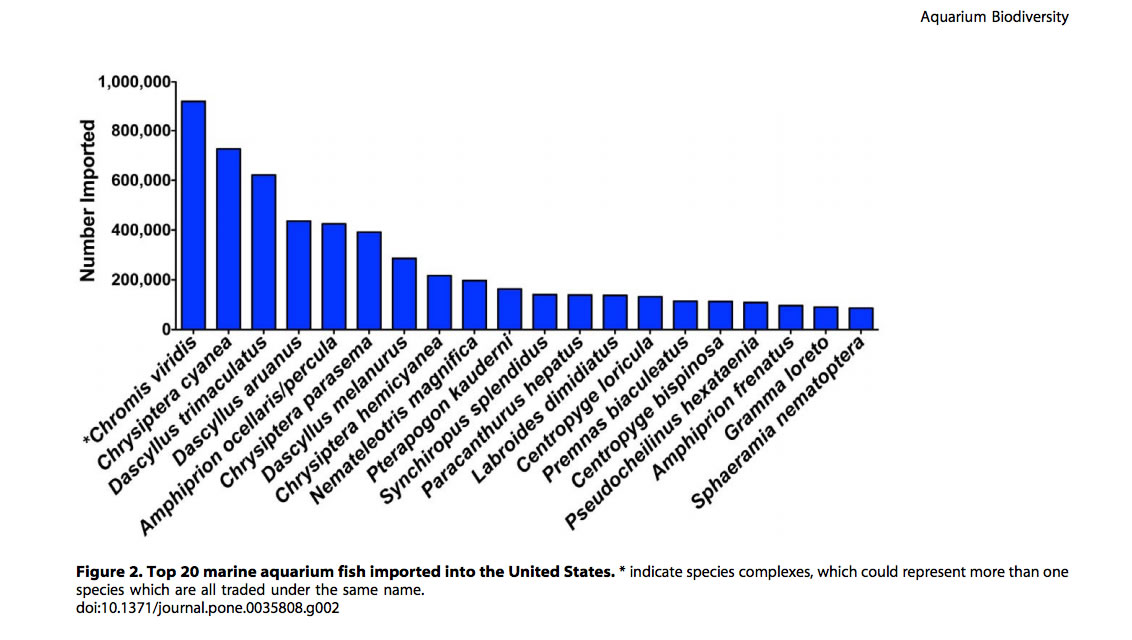The last year has seen a lot of heated discussion and possible legislation regarding the Marine Aquarium trade. In these discussions everyone seems to have data on the numbers of fishes that move through the trade, but the sources of that data often somehow seems ‘iffy’. Today a new paper was published in the open access journal PLoS One (making scientific papers available to anyone for no cost!) that examines a years worth of US marine fish import paperwork to present a clear picture of how many fish of what kinds are actually being imported into the country. The 9 page paper by Andrew Rhyne et al, available here, not only presents useful information, but also gives a great overview of the process of importing fish into the US as well as addressing some invasive species concerns. I expect in the coming weeks there will be a lot of discussion regarding the content of this publication, so instead of wading into that playing field now I am going to instead recommend that everyone involved in the saltwater hobby or industry read the paper for themselves. Finally, actual data is available, and anyone that has ever entered into a discussion about the sustainability, ethics or responsibility of reefkeeping should take advantage of it.

Richard Ross currently works as an Aquatic Biologist at the Steinhart Aquarium in the California Academy of Sciences, maintaining many exhibits including the 212,000 gallon Philippine Coral Reef. He has kept saltwater animals for over 25 years, and has worked in aquarium maintenance, retail, wholesale and has consulted for a coral farm/fish collecting station in the South Pacific. Richard enjoys all aspects of the aquarium hobby and is a regular author for trade publications, a frequent speaker at aquarium conferences and was a founder of one of the largest and most progressive reef clubs in Northern California, Bay Area Reefers. He is an avid underwater videographer and has been fortunate to scuba dive in a lot of places around the world. At home he maintains a 300 gallon reef system and a 250 gallon cephalopod/fish breeding system, and was one of the first people to close the life cycle of Sepia bandensis. When not doing all that stuff, he enjoys spending time with his patient wife, his incredible daughter and their menagerie of animals, both wet and dry.
View all posts










Well stated Richard, and thanks for the paper Andy!